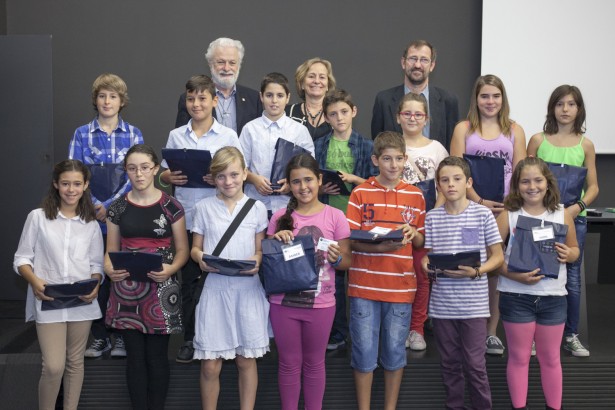This new advisory body —made up of 16 primary-school fifth- and sixth-graders from the Els Porxos and Els Horts schools in the amenity’s own Sant Martí district— was constituted on Saturday, 25 October of 2014.
This Children’s Council will act as an advisory team in matters concerning the Museum’s space, contents and activities.
The Museu de Ciències Naturals de Barcelona wants the Museum Children’s Council to be:
- A truly participatory body that allows the children to express their opinions, ideas and suggestions regarding all activities to do with the museum.
- A museum advisory council which is expert on childhood and which has the same consideration as any other advisory body that the museum may have.
- A space for debate and engagement that will facilitate feedback between the museum and children.
- An educational tool for schools that promotes the educational value of participation.
- A means of suggesting improvements in the museum; consulting the children should lead, as far as possible, to feasible, visible and definitive proposals.
- A body for consulting the children regarding any aspect of the museum, which is why it will be given an active role as opposed to a merely formal one.
Structure of the Museum Children’s Council, and how it will work
Structure
- The council will be made up of children (equal numbers of boys and girls) from the Els Porxos and Els Horts schools in Barcelona’s Sant Martí district. Both schools are close to the Museum, thereby facilitating any visits and meetings; in addition, this project is included in the proximity project which is being developed with the district of Sant Martí. Engaging the participation of two different schools ensures richer and more diverse experiences.
- The first children’s council will consist only of children from the higher stage of primary school (5th and 6th grade) for easier management. Initially, the council will have 16 members, although we do not rule out the possibility of increasing the number of council members or broadening the age range as the project develops.
- Council membership will be for a maximum of two years. Judging from the experience at the Parque de las Ciencias de Granada, it appears likely that the children may wish to continue their ties with the Museum, for which purpose an ex-councillors club, or a club of adolescents and young people could be set up so that the children can maintain their connection with the museum if they wish and not lose contact with it.
- Every effort will be made to ensure that the council members are from different backgrounds and socio-cultural levels, and that the physically handicapped are not excluded. Diversity will broaden our viewpoint.
How it will work
- The schools will be free to pick the members of the children’s council in whatever way they consider most appropriate. However, the Museum suggests choosing them randomly by a draw. If the boy or girl chosen does not want to be a council member, he or she is free to refuse. Being selected by a draw generates greater commitment and a feeling of responsibility in the child because they are aware that they owe the position to chance, that chance has made them a member of the council, and they must prove themselves up to the task.
- Council experience is, and should be, quite different from that of school. Council members are not obliged to take notes, or write essays, or give their opinion if they do not wish to.
- The councillors are not spokespersons for their schools or families but representatives of their own opinions. We could say they are experts in childhood and are chosen for that reason.
- The council members will receive notice of the meetings at their home, along with the minutes of the previous meeting and the agenda to be discussed at the next meeting. The schoolteachers will also receive notice of the meetings.
- The meetings should be held fairly frequently for the purpose of maintaining an active and effective work dynamic. The council’s work schedule will be laid out at the beginning of the school year, the meetings being grouped into a four-month period (for example, one meeting per month from October to January or from February to May). Each meeting will last for approximately one hour and will be held during school hours.
- The only adults who may attend the council meetings will be the catalyst and the secretary in charge of taking notes and drawing up the minutes. As promoter of the council, the Director of the Museu de Ciències Naturals de Barcelona may always attend, either at the request of the council or on his or her own initiative. The reason for restricting the presence of adults is to encourage a more spontaneous, natural and creative participation than is generally the case when adults are present.
- Decisions will not be taken by vote. The Children’s Council at the Museum will not be a representative council in the traditional sense, but a participatory council. Good, innovative ideas are few and far between, and when children vote democratically it always leads to the least imaginative, most commonplace, ordinary proposals being approved, that is, the ones most similar to what adults would do. So, the catalyst plays a key role in finding out what the children’s opinions really are.
- The possibility of setting up work groups within the council will be taken into account.
- The council may call extraordinary meetings should the members consider it necessary.
Documents of interest:
International Convention on the Rights of the Child
Report of the Children’s Council of the Museum

